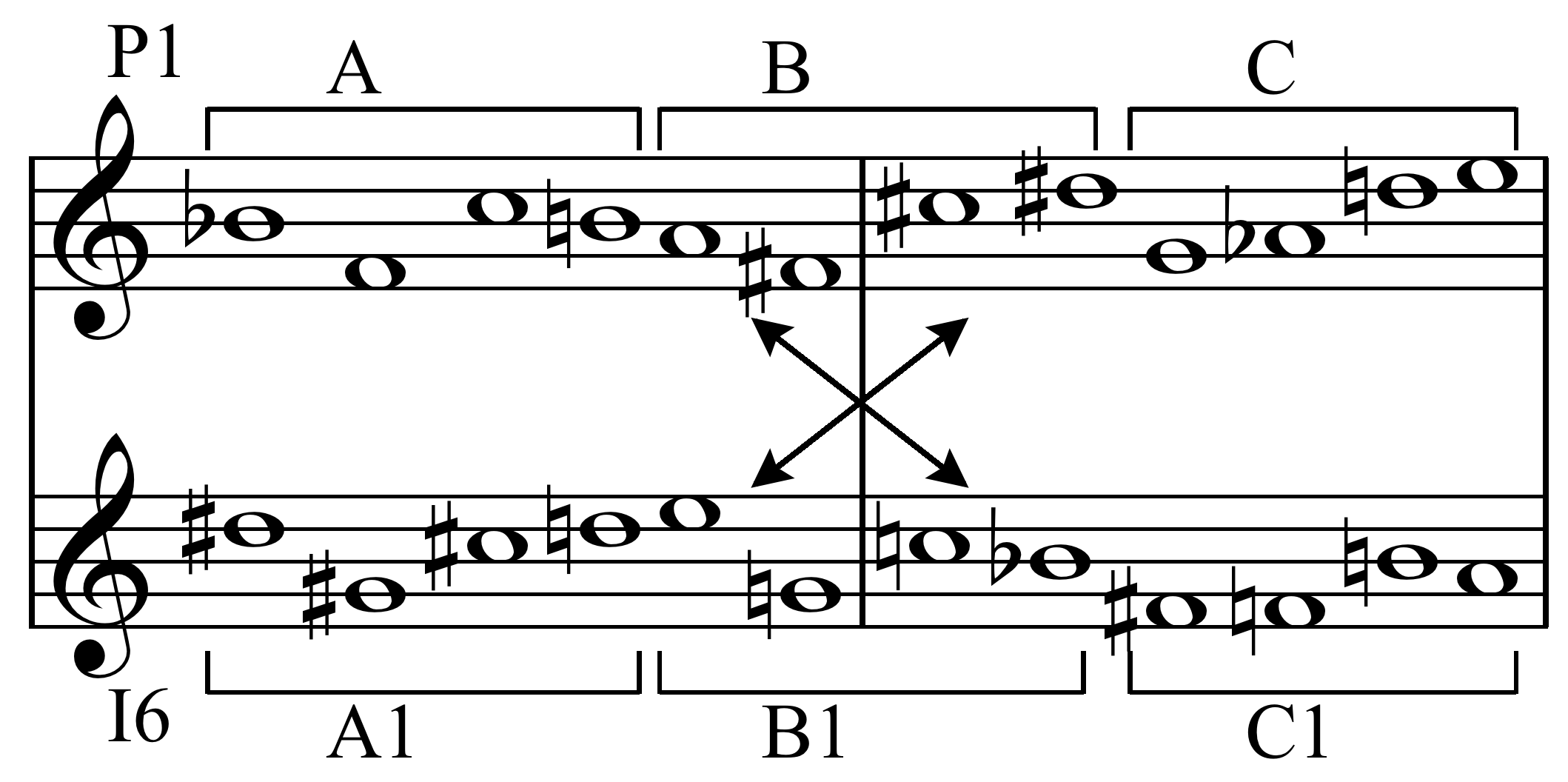Zwei Klavierstücke (Schoenberg) on:
[Wikipedia]
[Google]
[Amazon]
''Zwei Klavierstücke'', Op. 33, also known as ''Zwei Stücke'', or in English as Two Piano Pieces and Two Pieces, is a composition for piano by Austrian composer
 In order to compose the piece, Schoenberg uses inverted and retrograde versions of the row in various forms. The first movement starts with six chords, which show the row used in the piece.
In order to compose the piece, Schoenberg uses inverted and retrograde versions of the row in various forms. The first movement starts with six chords, which show the row used in the piece.
\relative c
Arnold Schoenberg
Arnold Schoenberg or Schönberg (13 September 187413 July 1951) was an Austrian and American composer, music theorist, teacher and writer. He was among the first Modernism (music), modernists who transformed the practice of harmony in 20th-centu ...
. They were composed between 1928 and 1931 and were Schoenberg's last works for solo piano.
Composition
Schoenberg's ''Piano Pieces'' were just some of his smaller compositions that followed '' Von heute auf morgen'' and '' Moses und Aron''. He started composing the first, Op. 33a, when the director of Universal Edition contacted him to publish the first piece in Op. 11 in an anthology of piano compositions. Schoenberg then decided to write a new piece on December 25, 1928, and finished it on April 25, 1929. The composition of the second piece, however, took only three days, from October 8 to 10, 1931, while he was staying in Barcelona. The impetus for Op. 33b was a request by Schoenberg's former pupil Adolph Weiss for a new piano piece that Henry Cowell's '' New Music Quarterly'' could publish as Op. 33b. Thus, Op. 33a and b were composed separately, but it is still unknown if Schoenberg had conceived them to comprise a unified composition. Both pieces were also premiered separately. The first piece was published byUniversal Edition
Universal Edition (UE) is an Austrian classical music publishing firm. Founded in 1901 in Vienna, it originally intended to provide the core classical works and educational works to the Austrian market. The firm soon expanded to become one of t ...
in July, 1929, and premiered in Berlin, on January 30, 1931, by Else C. Klaus. The second piece was published by The New Music Society of California Publisher, in April, 1932, and premiered in San Francisco's New Music Society on January 11, 1934, by Douglas Thompson. Since then, it has also been published by Belmont Music Publishers and by Schott Music
Schott Music () is one of the oldest German music publishers. It is also one of the largest music publishing houses in Europe, and is the second-oldest music publisher after Breitkopf & Härtel. The company headquarters of Schott Music were foun ...
.
Analysis
The two movements of this composition show the development of Schoenberg'stwelve-tone technique
The twelve-tone technique—also known as dodecaphony, twelve-tone serialism, and (in British usage) twelve-note composition—is a method of musical composition. The technique is a means of ensuring that all 12 notes of the chromatic scale ...
, from its initial conception until its culmination in 1936. It takes approximately five minutes to perform both movements, and neither movement has a title. In some recordings, the movements are titled according to their tempo markings:
Both movements follow the principles of the twelve-tone technique, according to which a row of twelve tones is selected in order to construct the composition. The row of Op. 33a is 0 7 2 1 11 8 3 5 9 10 4 6.
: In order to compose the piece, Schoenberg uses inverted and retrograde versions of the row in various forms. The first movement starts with six chords, which show the row used in the piece.
In order to compose the piece, Schoenberg uses inverted and retrograde versions of the row in various forms. The first movement starts with six chords, which show the row used in the piece.
Arrangements
Takatoshi Naitoh
Takatoshi (written: 高資, 高俊, 高利, 高松, 孝駿, 隆敏, 貴俊, 鷹俊, 昂聡 or 宝寿) is a masculine Japanese given name. Notable people with the name include:
*, Japanese hurdler
*, Japanese ''daimyō''
*, Japanese economist and a ...
arranged this composition for computer and synthesizer in 1991. It was recorded at the Polydor KK Studio in Tokyo, in June, 1991, and was released by Deutsche Grammophon
Deutsche Grammophon (; DGG) is a German classical music record label that was the precursor of the corporation PolyGram. Headquartered in Berlin Friedrichshain, it is now part of Universal Music Group (UMG) since its merger with the UMG family of ...
in Japan.
References
External links
* {{DEFAULTSORT:Zwei Klavierstucke (Schoenberg) 1929 compositions 1931 compositions Solo piano compositions by Arnold Schoenberg Contemporary classical compositions